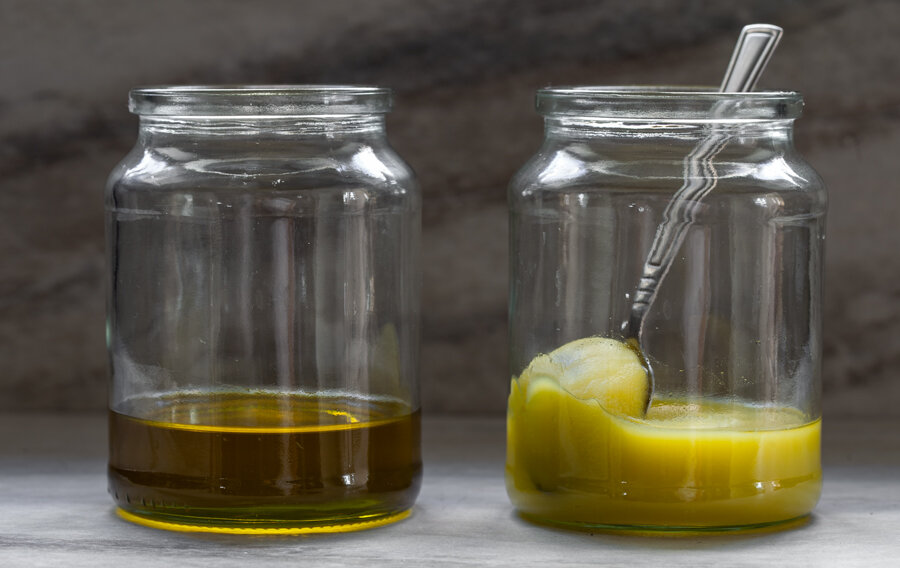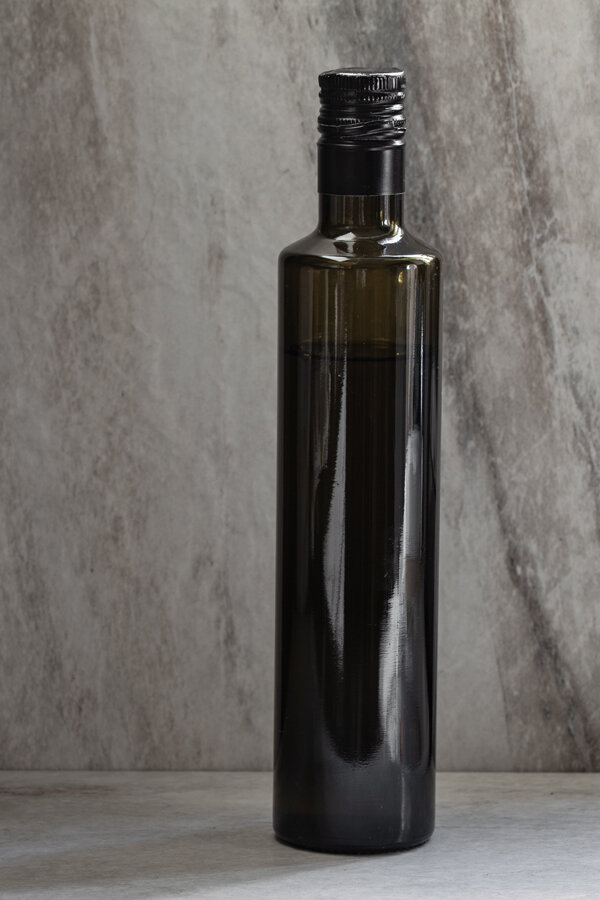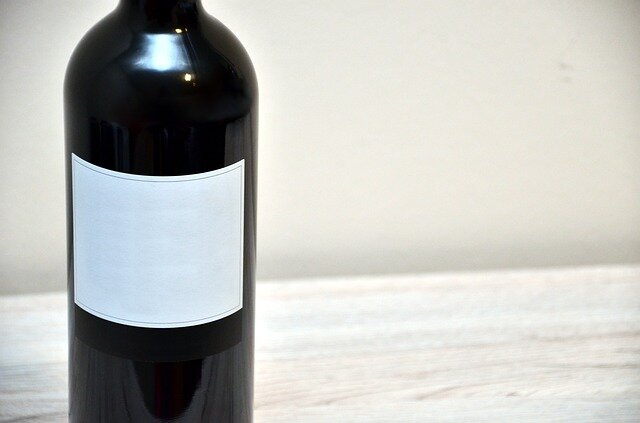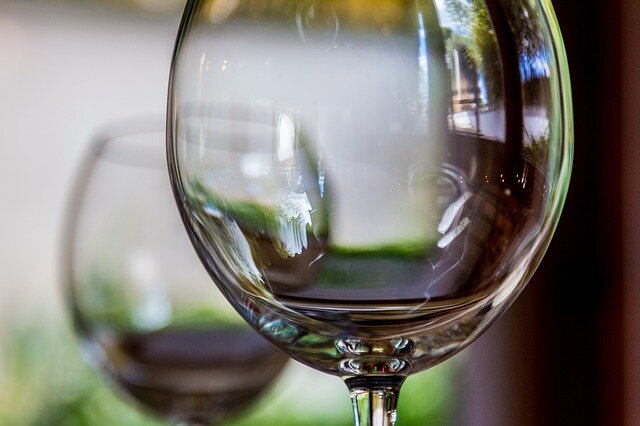HOW TO IDENTIFY PURE EXTRA VIRGIN OLIVE OIL
Eating extra virgin olive oil is both tasty and healthy. It’s so popular that many producers seek to differentiate themselves from the others, especially from the ones selling fake olive oils. Olive oil fraud is so widely spread nowadays, that sometimes it can be very difficult to determine its quality simply by choosing to buy the most expensive or fanciest bottle.
So how can we protect ourselves from the fake products out there? We certainly want the best for our health, and knowing the benefits of extra virgin olive oil, like its ability to protect against heart disease and inflammations, it would be very disheartening to realize we’ve been consuming the fake stuff all this time.
There are some ways we can tell if the extra virgin olive oil we’ve just purchased is the real deal:
EXAMINE THE BOTTLE
Extra virgin olive oil should be packaged in dark bottles! If you see an ‘extra virgin olive oil’ in a light bottle, don’t buy it, it’s either fake or rancid, since it’s not protected from light. It should be stored in a way that protects it from light, heat and air.
Additionally, it must be packaged in a glass bottle. Plastic bottles are too porous and cannot hold the light off.
Storage conditions affect extra virgin olive oil as well, as it must be stored in dark and cool places. Aside from buying, you should consider storing your extra virgin olive oil properly, even in your own kitchen, instead of placing it on the counter for convenience.
RESEARCH LABELS AND PRODUCER INFORMATION
Check the label and product information of the extra virgin olive oil you’re buying. A few things you should look for are the words ‘extra virgin’, ‘pure’ and ‘cold pressed’. While this doesn’t necessarily mean that you’re always getting the authentic product, these are certainly the words you should be looking for. Avoid terms like ‘light tasting’ or plain ‘olive oil’ as these are refined olive oils.
Additionally, look for information about the producer and the olive oil’s area of production.
Expiration date is really not that helpful here, you don’t even need to look for one because the olive oil might have been produced or bottled years before. Instead, look for ‘batch’, ‘bottled’, ‘pressed on’ or ‘harvest date’, if possible, which should be within 18 months.
LOOK FOR REASONABLE PRICES
When buying your extra virgin olive oil, one of the things you should consider is the price. This is a bit tricky, as cheap olive oils that claim to be extra virgin, are usually fake. EVOO is pricey because it requires specific conditions and procedures. The harvesting is usually done by hand and the amount of oil produced is quite small compared to the amount of fruits needed. Additionally, expensive equipment is needed in order to extract the oil efficiently. Be prepared to spend around 25-35$ per 500 ml if you’re buying imported EVOO.
On the other hand, you should not fall for high price tags or decorative fancy packages, because you will be disappointed. There’s a huge fraud going on with olive oils, so do your research before buying and don’t simply buy because it’s too cheap or too expensive.
USE YOUR SENSES
If you have the opportunity to taste the olive oil you’re buying, do it. It’s the best way to determine whether what you’re buying is extra virgin or not, because one thing that can’t fool people, is its taste.
You should be looking for a combination of earthy, grassy, bitter and peppery flavours and aromas, some varieties may even taste and smell slightly sweeter and fruitier.
While the fake ones will not have a pleasant taste and smell, as they will feel rancid, greasy and generally bad in the mouth and throat, they must not be confused with the bitter and spicy tones that extra virgin olive oil gives. This is because of the polyphenols found in extra virgin olive oil, which have great antioxidant and anti-inflammatory properties.
We want high polyphenol levels, so the bitterer and spicier your extra virgin olive oil is, the better!
Now, you might have tasted various extra virgin olive oils already. But are you doing it the right way? Professional EVOO sommeliers use this specific tasting method, which helps them determine and approve the quality of various oils:
Pour 15 ml in a blue glass or cup. Blue glass is used to conceal the color of the oil, so that professionals can rely purely on their senses of smell and taste. Since, you are perhaps not a professional EVOO sommelier, using a different glass color won’t matter much.
Cup the glass with your left hand to warm it, while using your right hand to close the top of the glass.
Swirl the glass around, same as you’d do when tasting a wine. This releases the oil’s aromas.
Now it’s time to smell it, take your time doing this.
Next, take a sip and play it around your mouth and tongue. You might detect a slight sweet flavor at the tip of your tongue. Inhale through your teeth but don’t swallow yet as now you should be looking for the bitterness.
When you’ll finally swallow, it should leave you with a flavor of spiciness and it might even make you cough.
DO A SIMPLE PURITY TEST


You can test the purity of your extra virgin olive by
pouring approximately 1 finger of oil in a glass jar,
sealing it and placing it in the fridge for 24 hours.
Pure olive oil will solidify because it contains
monounsaturated fats, while fake olive oil will
remain liquid.
Extra virgin olive oil is rich in high quality fats, which makes it extremely healthy when consumed. If you want to reap its benefits to the fullest, you must know how to identify it. It should have spicy and bitter tones when you taste it and fruity aromas of olives, earth and grass. Be sure to examine both the bottle and label and don’t be deceived by extremely low or high prices. Again, do your own research, taste various oils and determine which is best for you.
Here, at Kardamas, we always aim for high quality extra virgin olive oil and we invite you to taste it for yourself and experience the difference.
Take a moment to visit our shop for high quality, greek extra virgin olive oil.





